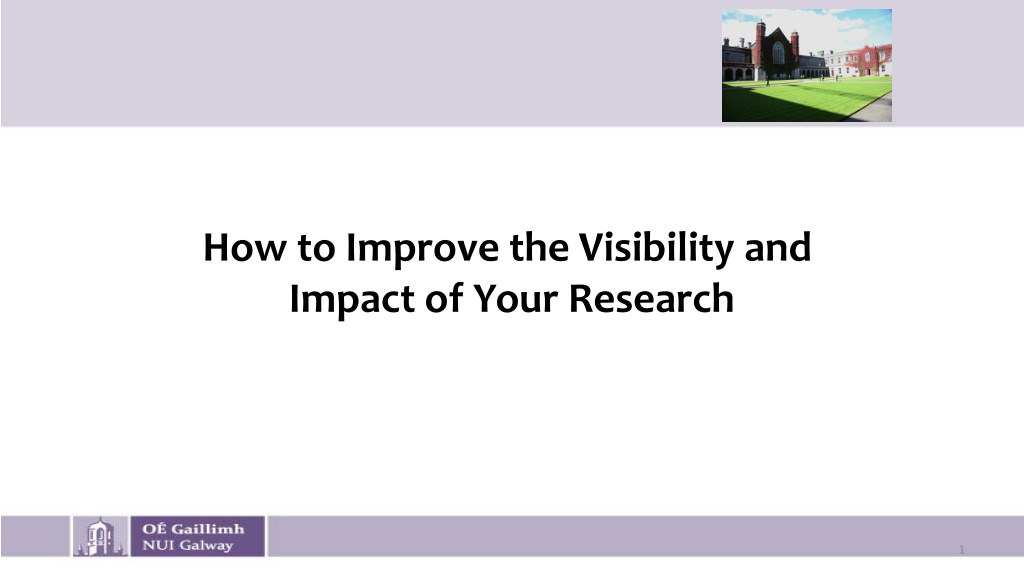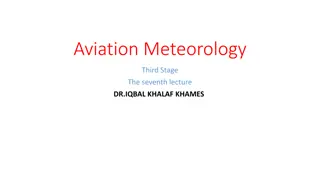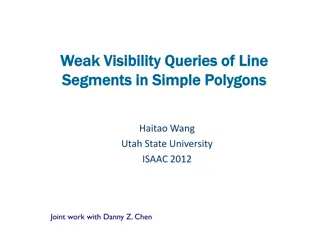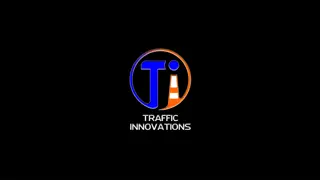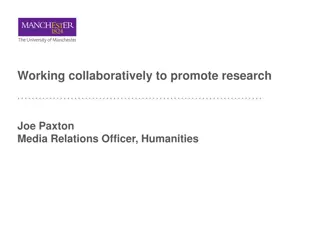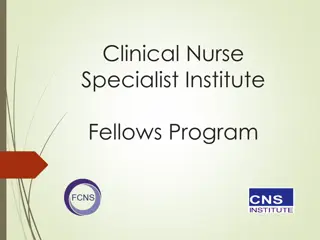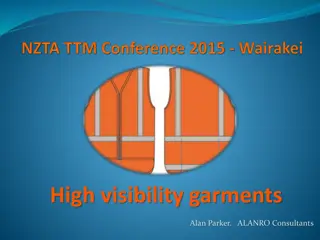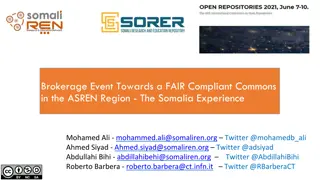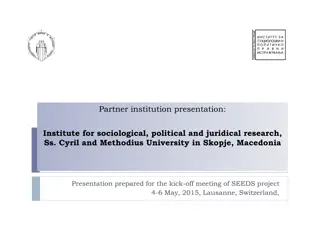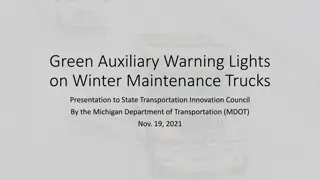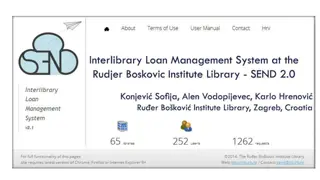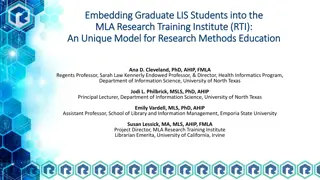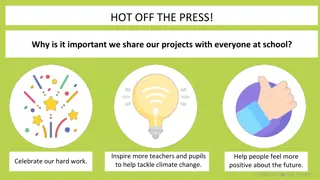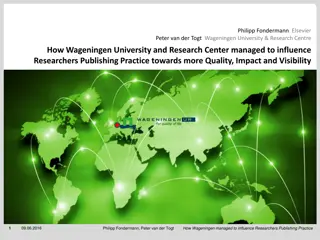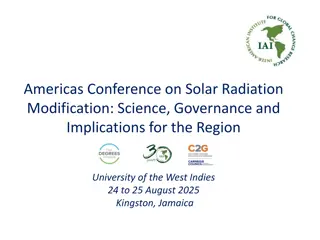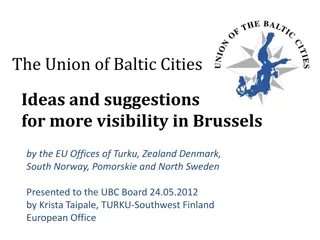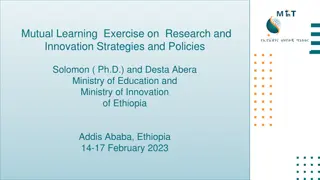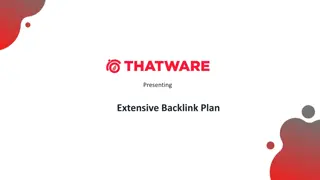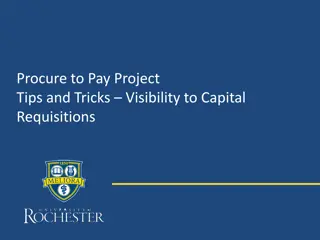Enhancing Research Visibility and Impact for [School/Institute Name]
Learn how to boost the visibility and impact of your research through strategic metrics, collaborations, and leveraging tools like IRIS, Scopus, and Altmetrics. Understand key performance indicators, analyze research trends, and improve your academic profile to stand out in the academic landscape.
Download Presentation

Please find below an Image/Link to download the presentation.
The content on the website is provided AS IS for your information and personal use only. It may not be sold, licensed, or shared on other websites without obtaining consent from the author. Download presentation by click this link. If you encounter any issues during the download, it is possible that the publisher has removed the file from their server.
E N D
Presentation Transcript
How to Improve the Visibility and Impact of Your Research School Institute Name to go here 1
The Big Picture: Research Metrics Uses Researcher Profile metrics KPIs metrics Internal Promotions and PMDS Hiring decisions Funding Applications University KPIs Institutional Review of Research performance (IRRP) Research Strategy Opportunities, strengths Benchmarking Rankings Publications per Year Citations per Year No. KPI 2013/14 167.82 159.95 2014/15 2015/16 E 169.01 162.93 12 80 Academic FTE Academic FTE Minus PTA 1 Total Publications (from IRIS)/Academic FTE 2 Total indexed publications in ISI WOS/Academic FTE 3 Total Citations per year/Academic FTE 4 Citation Impact Total citations (rolling 5 yr) in ISI WOS/Total indexed publications in ISI WOS 169.01 162.93 70 10 60 8 7.53 7.66 7.21 50 6 40 30 3.69 4.35 3.12 4 20 2 10 51.03 62.86 76.13 0 0 2004 2005 2007 2010 2012 2015 2017 2002 2006 2008 2009 2011 2013 2014 2016 2002 2004 2005 2006 2014 2015 2016 2017 2007 2008 2009 2010 2011 2012 2013 4.52 5.24 6.51 Time Period 1996-2016 Citation Metrics Times Cited Scopus Docs Cites per doc % of docs Cited h-index Field Weighted Citation Impact Self Citation metrics 560 Self Cites 79 % Self Cites 7.1 Cites per Doc without self Cites 38.20% h-index without self cites 10 1.47 Collaboration metrics Unique Authors No of papers international collaboration no of docs national collaboration Institutional collaboraiton 213 38.0% 4.4 10 2 44 5 28 IRIS Book Journal Chapters IRRP metrics Other Pubs IRIS 2011-2015 Incites (2010-2014) Incites - 2014 Supervisor Grand Total 2011-2015 Research Funding (Spend) 2010-2015 Funding IRRP 5 year Conf. Cites per Cites per Average Average Gender All 5 year docs ns Papers Docs PHDs Masters cites Cites Publicatio Document Document Name Title Joe bloggs Jane Doe Tom Halo Female Female Female Professor Lecturer Above Lecturer Above 5 1 2 0 0 0 0 1 3 22 19 0 2 6 15 29 27 20 16.0 3.0 5.3 0.0 0.0 0.0 21 8 14 0 0 0 50,000 25,196 22,315 By Claire O Connor
The Big Picture: Sources of Research Metrics IRIS Institutional Research Information System web-based system that enables researchers and academic staff to create, update and maintain their own web profiles/CV s and showcase their research expertise and research achievements to a global audience Links to WOS automatically Scopus - bibliographic database containing abstracts and citations for over 60m academic journal articles since 1996. Encompasses over 21.5k peer reviewed journals and 130k books. Scopus offers author profiles which cover affiliations, number of publications and their bibliographic data, references, and details on the number of citations each published document has received. Ensure you use a consistent Author name/ID SciVallinks to profiles in Scopus. Can combine profiles into Schools, Research Groups and present visual research performance, benchmark relative to peers, develop collaborative partnerships and analyze research trends at an institutional or department or subject level. Incites based on Web of Science (WOS) similar to Scopus but more scientific and uses a different database of journals. Web of Science encompasses over 50,000 scholarly books, 12,000 journals and 160,000 conference proceedings Altmetrics: measure of online engagement and impact/reach of a paper/person. non- traditional metrics proposed as an alternativeto more traditional citation impact metrics - Based off a very broad group of metrics (eg. Viewed, Discussed, Saved, Cited, Recommended) capturing alternative measures of impact a paper or work can have. Altmetric tracks a range of sources to capture and collate this activity. By Claire O Connor 3
The Really Big Picture: University Rankings Metrics Importance of Research - THE Research related metrics account for 64.75% THE Ranking -Metrics Research 30% Teaching Teaching 30% Internation al 7.5% Research Industry Income 2.5% Citations 30% International By Claire O Connor 4
The Really Big Picture: University Rankings Metrics Importance of Research - QS QS University Ranking Metrics QS Subject Ranking Metrics Intnl Students 5% Intnl Faculty 5% Intnls Staff/ Student 20% Academic Reputation Academic Reputation 40% Staff/ Student Citations/ Staff 20% Citation/ H-Index Employer s Survey 10% Employer s Survey Based on Journals ASJC Code not the Academic Takes both survey results from previous year; 2012-2016 for 2017 Ranking results Citation per paper and H-Index from Scopus from 2011-2015 Metric weighting depends on Subject By Claire O Connor 5
ROUTINES FOR SUCCESS Joseph Reilly Research Impact Librarian School Institute Name to go here 6
ROUTINES FOR SUCCESS Before Submitting Preparing Your Research Announcing Your Research Monitor and Measure School Institute Name to go here 8
ROUTINES FOR SUCCESS: BEFORE SUBMITTING Creating and managing your digital identity ORCID ID: https://orcid.org/signin Where to submit? Consider: Journal Rankings (CiteScore, SJR SNIP), Open Access, Funding, Embargos About Open Access: Which Repository? What to upload: Data, Software, Graphics and Photos, Presentation Materials School Institute Name to go here 9
ROUTINES FOR SUCCESS: PREPARING YOUR RESEARCH Keywords in Title, Captions, Abstracts Why? 54% of views to your work originate in search engines, 26% from indexes like SCOPUS The TITLE is vital! 2-3 keywords used at start of title Test variance in Google and subject index No acronyms Under 15 words: Google truncates titles to 55-60 characters Not only keywords but format WRONG: Helping Others to Find your Work Online: Search Engine Optimization (SEO) in 4 Easy Steps RIGHT: Search Engine Optimization (SEO) in 4 Easy Steps: Helping Others to Find your Work Online School Institute Name to go here 10
ROUTINES FOR SUCCESS: ANNOUNCING YOUR RESEARCH Social Media Blogs ListServs Academic Networks: ResearchGate, Mendeley etc Conferences and Talks YouTube The Importance of LINKS: Links to your work on NUI Website, your personal website, all social media, blogs, in your EMAIL SIGNATURE Link to Link: Your webpage to your publication. Your publication to your webpage. School Institute Name to go here 11
ROUTINES FOR SUCCESS: MONITOR AND MEASURE Academic Indicators: h-index and citation counts Social Indicators: Views, Downloads, Mentions EXAMPLE: PROF. DEVANE School Institute Name to go here 13
ROUTINES FOR SUCCESS: LAST THOUGHTS These are ROUTINES, not chores Ultimately, YOU are responsible for your success. You ve worked unbelievably hard on your research, now show the world! School Institute Name to go here 14
Questions? School Institute Name to go here 15
